We’re making plans in an era of uncertainty. These things are going to keep happening. It’s not clear if we’ll ever again get to a point where we can guarantee that an in-person event will definitely be in person, or that the keynote speaker we were planning on doesn’t suddenly develop the sniffles and will now give her speech from a virtual podium instead of the stage. Because of our new reality, here are a few recommendations on how to be proactive in your leadership and team meeting planning.
Read MoreAs a business, we had zero in-person events scheduled between March 2020 and June 2021. As we became vaccinated against COVID-19, and many in the community became protected as well, we started hearing from clients that were hopeful and interested in gathering in-person, while still taking precautions to mitigate the virus's spread.
So, we're leading events again, and often, our hosts are asking attendees and facilitators to mask up. Since June, we’ve had the opportunity to lead our Influential Storytelling workshop in-person several times, and many of those times we facilitated while wearing a mask. Along the way, we’ve learned a thing or two about how to facilitate or present with a mask on; what to pay attention to, what to keep in mind, and best practices to take to heart.
Here are a few of our learnings.
Read MoreOver the past several weeks, we posted a series of articles that walk you step by step through planning and facilitating the best strategy retreat of your career. Each week, we focused on one critical piece of the process we follow with our clients to ensure they design their meetings effectively and facilitate them for success.
>> Part 1: Define Success
>> Part 2: Develop a Straw Man Agenda
>> Part 3: Design Your Activities to Engage Your Attendees
>> Part 4: Navigate Day-of Challenges
Read MoreIt’s showtime! You’ve defined success, prepared a straw model agenda, and then refined that agenda for engagement. You’ve done the work to intentionally set up your meeting for success, but there are some things you just can’t do in advance. Here are some tips to help you navigate (and avoid!) day-of challenges that may arise.
>> Keep the Meeting on Track
>> Address Last Minute Attendance Changes Productively
>> Handle Low-Energy Moments
Read MoreNow it’s time to roll up your sleeves and prepare to get a little dirty. This is where it gets incredibly messy before you clean it up. Think about the journey your participants need to go on over the course of the retreat, and build out a row in your table for each step of that journey. Determine what they need to KNOW, FEEL, and DO first, second, third, and so on. Each row will be its own experience or agenda item, and each should have it’s own distinct purpose. Then, as best as you can, fill out the rest of your table to create your straw man agenda.
Read MoreThe most important thing you need to do once you’ve broadly identified the need for a strategy retreat is to define success. There are a few ways to do this, but the crux of this step is to make sure you and your team are aligned on the “why” for the retreat. Why is it happening? Why should people show up? Why should they care? Why should they contribute? Don’t just focus on the routine… we’re meeting because that’s what we do every year. Instead, aim to uncover why this retreat specifically needs to happen this year. Although you may already have a cursory idea of agenda topics, this step should take you beyond thinking about “what” you’re doing, and bring focus and sophistication to your meeting design.
Read MoreRecently we delivered our Influential Storytelling program to a sales team that was interested in the content for two reasons: They understood the value of storytelling in their sales process and wanted to bone up their skillset, but they also saw storytelling as a crucial part of developing internal institutional knowledge about the product, their customer success stories, and more. As the company grew, the sales team was experiencing a lot of turnover. The Director of Sales wanted to capture and codify the institutional stories that everyone on the team should be familiar with and leverage in the sales process
With this objective in mind, we recommended they establish two routines after exploring our Influential Storytelling content.
Read MoreBottom-lining is one of the most effective ways that a facilitator can keep the conversation on task, redirect tangents, stick to agenda and time, and engage participants. If you have a particularly chatty participant, asking them to bottom-line their contribution helps them cut out the unnecessary storytelling and asides. If you or others in the meeting have trouble understanding a participant’s point, asking them to bottom-line will help clarify what their message is. And as a facilitator, by reiterating what you hear a participant say as a single, succinct bottom line will help verify that you (and others in the room) are interpreting things correctly.
Read MoreAs bootstrapped founders, we may not find ourselves about to give a formal pitch in front of suited VCs, but we do constantly interact with potential customers, partners and other stakeholders in our networks. Every one of these people should know what you do and most importantly why you do it.
You’ll know it’s time to tell a story about what you do and why when you get questions like these:
Why did you start your business?
What are you up to lately?
Tell me about yourself
Here’s how you can craft a version of your story that will feel authentic and extemporaneous, but also be an influential and powerful representation of you and your business...
Read MoreHer plan was to pose some questions to the group, and then have a discussion about each one. Stephanie immediately asked her if there would be any implicit or explicit power dynamics in the room, and whether any person in the group was considerably more extroverted than the others.
You see, her big challenge wasn’t identifying the right question to ask. She had good, open-ended questions that were straightforward enough and easy to understand (although hard to answer). Her challenge was making sure that the ideas that surfaced were all given a fair shake, that no one voice dominated the conversation, and that her process guaranteed the best ideas would bubble to the top.
Here are some fun tricks we recommended to her that day, and ones you can consider for your own meetings…
Read MoreEvery founder, CEO, or sales person has to pitch their company or product, but to their detriment, not all of them bring a story to do so. The pitch is an obvious structure. It’s easy to meet the baseline expectations here. But if you want to be noticed and remembered, inspire people with your vision, prove your passion, paint a picture and ultimately gain champions, storytelling—specifically influential storytelling—is a valuable skill to have in your tool belt.
Read MoreOur partnership is the foundation of our business. It shapes our work, how we show up for our clients, how we run meetings and what we put out into the world. Leaders watch our partnership in action and notice the trust, honesty, and candor between us and how that creates the space for both of us to be the best versions of ourselves. “How do we do that?” they ask. “What’s the secret?”
The answer lies in two important qualities of how we work together, and these qualities are transferable to any meeting you may have at work. If done well, over time they’ll manifest incredible trust and candor within your team.
Read MoreA story that is personally relevant to, and reveals an authentic truth about the storyteller encourages the audience to connect with the storyteller on a human level. This authentic connection is incredibly powerful when it comes to influencing and leading others; it allows for the possibility that the audience will support, root for, buy into, or be led by the storyteller.
Read MoreWhen you gather your team for a weekly alignment session, stand up to give a presentation to your board, or plan a conference… No matter how big or small or mundane your meeting is, your attendees arrive with a set of expectations, assumptions, and preconceived notions.
The first 3-5 minutes of your meeting are your opportunity to make sure all those expectations and assumptions are aligned across the group, and folks are motivated to participate. You can do a lot in a few minutes; aim to establish operating norms or ground rules, share the agenda, and perhaps most importantly of all, set the tone. It’s in these 3-5 minutes that your attendees will make a decision about how much or little they will engage as participants and it’s your job to invite them in properly.
Read MoreOpening a story or presentation is one of the most difficult yet essential things to nail down in advance. At our Story Hours, or during a coaching session, it’s very common for storytellers to begin with, “Uh... okay,” “My story is about…” or the ever classic, “So…”
It’s common to begin with a half-baked plan, and it’s not surprising because most people are still crafting the story in their heads while they are speaking. The moment may be extemporaneous or just unplanned and the slow start is an inevitable side effect. But it’s time to develop some strategies to avoid showing up like you’re not sure what you’re talking about.
Read MoreAs human beings, we’re neurologically wired for stories - it’s been the primary mode of information transfer for most of human history, and as a result, we remember stories and the details associated with them far more effectively than any other kind of information. Stories present information in a controlled way, and bring the audience along by having them participate in the story through emotional and intellectual engagement.
However… if you want to use a story to actually influence someone, then we’re talking about taking stories to another level of awesome sauce. When you’re trying to influence, you’re not just trying to get your audience to remember your message - you want them to think or act differently as a result.
Read More















